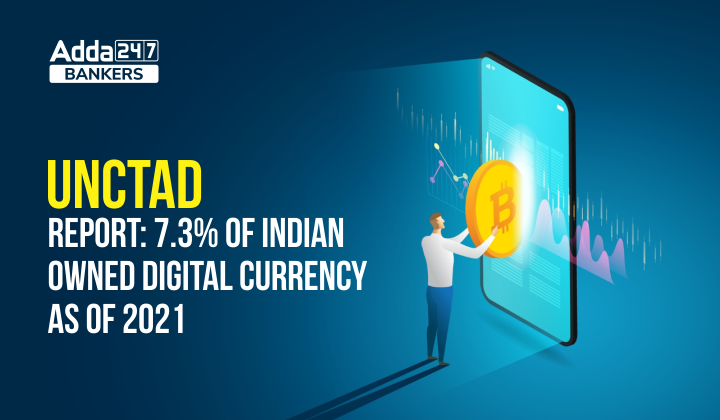Main points of the report
- India’s crypto ownership is the seventh highest in the world and about 3 per cent of Indian population owned digital currency.
- Developing countries accounted for 15 of the top 20 economies when it comes to the share of the population that owns cryptocurrencies.
- Ukraine topped the list followed by Russia, Venezuela, Singapore, Kenya, and the US.
- Global use of cryptocurrencies has increased exponentially during the Covid–19 pandemic, including in developing countries.
What are the Issues Highlighted by the Study?
- Private digital currencies have rewarded some and facilitated remittances, but they are an unstable financial asset that can also bring social risks and costs.
- As these Digital currencies are not regulated, there has been a rapid rise in their demand in developing countries as it also helps in facilitating remittances and act as a hedge against inflation.
- The recent digital currency shocks in the market suggest that there are private risks to holding crypto, but if the central bank steps in to protect financial stability, then the problem becomes a public one.
- If cryptocurrencies become a widespread means of payment and even replace domestic currencies unofficially, this could jeopardies the monetary sovereignty of countries.
- Cryptocurrencies can undermine domestic resource mobilization in developing countries.
What are the Suggestions given in the Study?
- The Government can facilitate remittances, they may also enable tax evasion and avoidance through illicit flows.
- The study urged authorities to take steps to curb the expansion of cryptocurrencies in developing countries, including ensuring comprehensive financial regulation of cryptocurrencies by regulating crypto exchanges, digital wallets and decentralized finance, and by prohibiting regulated financial institutions from holding cryptocurrencies (including stablecoins) or offering related products to customers.
- It also called for restrictions on advertising related to digital currencies, as with other high-risk financial assets.
- Further, providing a secure, reliable and cost-effective public payment system that is fit for the digital age; Implement global tax harmonization on digital currency tax practices, regulations and information sharing, and redesign capital controls to accommodate the decentralized, borderless and pseudonymous characteristics of digital currencies.
What are the reasons for the increased use of cryptocurrency?
According to UNCTAD, there were two reasons for the increased use of cryptocurrencies.
- The use of cryptocurrencies was an attractive channel, in terms of price and speed, through which to send remittances. During the pandemic, the already high costs of traditional remittance services rose even higher during lockdown periods due to related disruptions, the report added.
- Cryptocurrencies, as part of financial investments and speculation, are mainly held by middle-income individuals in developing countries and, particularly in countries facing currency depreciation and rising inflation (triggered or accentuated by the Covid-19 crisis), cryptocurrencies have been perceived as a way to protect household savings.
What is digital currency?
Digital currency refers to any means of payment that exists in a purely electronic form. Digital money is not physically tangible like a dollar bill or a coin. It is accounted for and transferred using online systems.
Other post
Recent Posts
| Current Affairs April 2022 | |




 GA Capsule for SBI Clerk Mains 2025, Dow...
GA Capsule for SBI Clerk Mains 2025, Dow...
 The Hindu Review October 2022: Download ...
The Hindu Review October 2022: Download ...
 UCO Bank LBO 2025 Result Out for 250 Loc...
UCO Bank LBO 2025 Result Out for 250 Loc...





